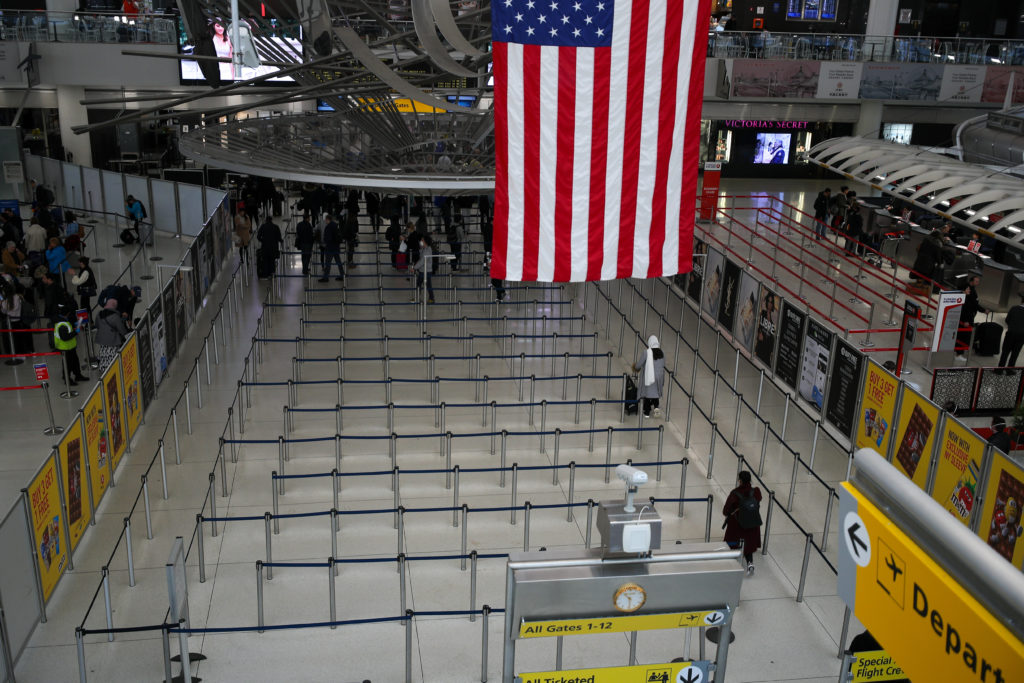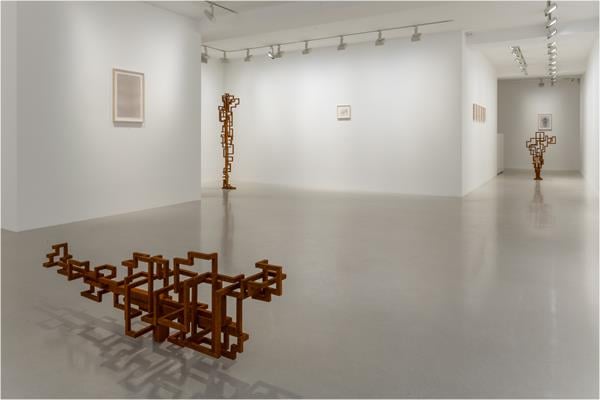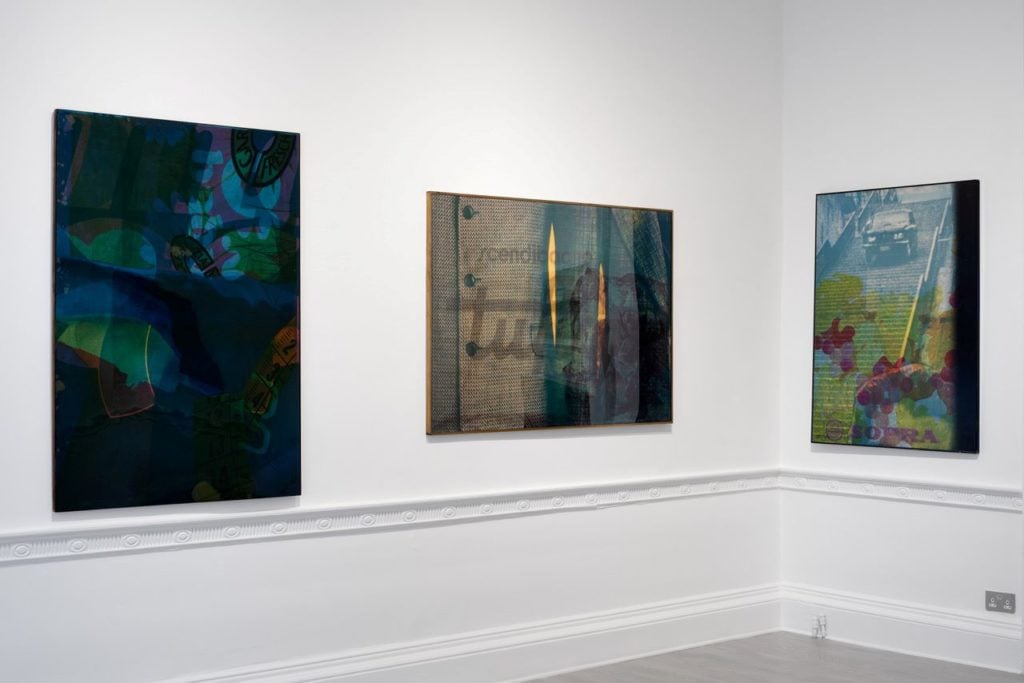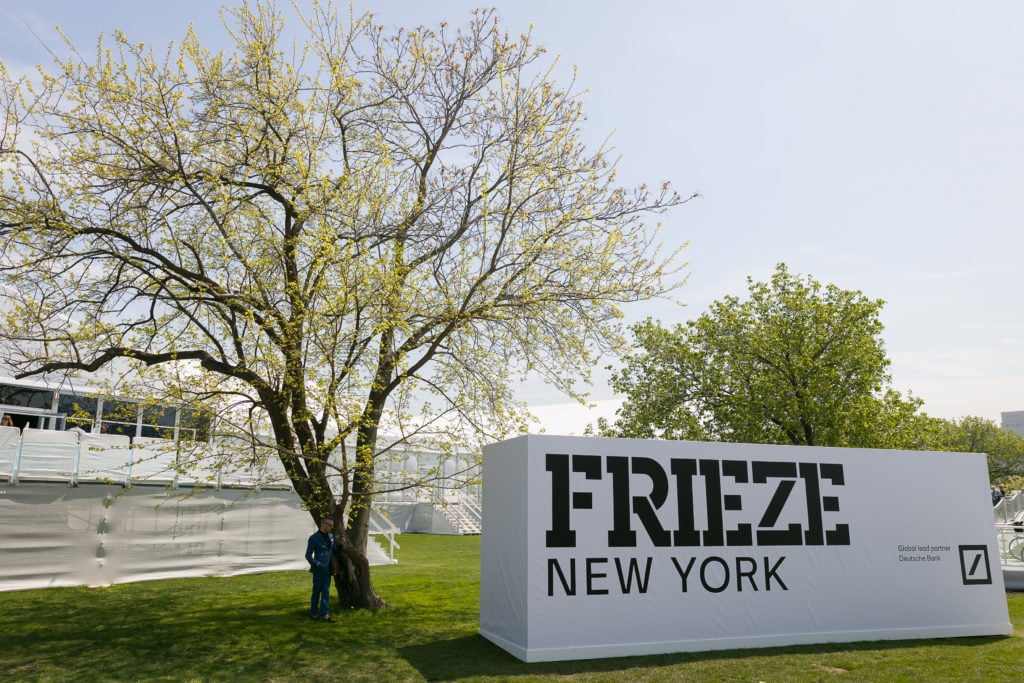Art World
‘Who Will Worry About Art Now?’: The European Art World Reacts to the Coronavirus Outbreak and Trump’s Latest Travel Ban
“Above all, we need solidarity," says one artist.

“Above all, we need solidarity," says one artist.

Naomi Rea &
Javier Pes

On March 11, when President Donald Trump announced he was suspending travel from Europe to the US for 30 days, the leading European gallerist Thaddaeus Ropac was in Paris for the opening of a show of Antony Gormley’s newest work.
And his thoughts, like those of seemingly everyone else, were on the coronavirus—and how to stay safe.
“Because we are concerned about the wellbeing of our visitors and our own team, we have been trying to spread out attendance [to the show] by encouraging people to come at different times during the day,” Ropac tells Artnet News. “We can’t have the usual kind of crowded opening in these circumstances. We have a responsibility to adapt the way we do things.”
As people stop traveling and begin to self-isolate, Ropac says he is looking to the gradually improving situation in Asia as an indicator for how things could go in Europe. And from a business perspective, he’s also starting to think about the usefulness of the internet to his operations.
“I was never a big believer in online sales since I always prioritized encouraging collectors to see the works in galleries where they have the best view,” Ropac says. “This is the first time I’m putting my weight behind online sales.”
The gallery is now launching its first online viewing room and participating in Art Basel’s online edition, which the Swiss fair brought forward after it canceled its 2020 Hong Kong edition. But Ropac doesn’t think the current travel restrictions will become a long-term issue.
“We just have to look ahead,” he says.

Antony Gormley, IN HABIT (2020). Installation view, Galerie Thaddaeus Ropac, Marais, Paris, France. Photograph by Charles Duprat. © the artist.
But the road ahead has doubtless been made rockier by Trump’s shock announcement that travelers, excepting US citizens and permanent residents, from initially 26 European countries would not be allowed to travel to America for a month. The ban has since been extended to include the UK and Ireland.
“I am not getting on a plane anytime soon,” says Joe La Placa, a director of London- and Milan-based Cardi Gallery and a US citizen. While being careful, he refuses to become paranoid, and says the gallery’s sales have not fallen off a cliff edge.
“Oddly, we have just had one of our best weeks,” he says, referring to the galery’s Mimmo Rotella show in London and its booth at the truncated TEFAF Maastricht, which saw lower attendance and was cut short by coronavirus.
While Cardi’s Milan location has been forced to close, he says the gallery plans to keep its London space open “as long as possible.”
Another ex-pat American gallerist, Berlin-based Javier Peres, notes dryly that “not all national governments are taking the most prudent, science-based approaches to the handling of Covid-19.” He is working out the implications of the travel ban for his gallery, his clients, and his artists while a show by Chinese artist Shuang Li goes on—albeit by appointment.

Mimmo Rotella’s show, “Beyond Décollage: Photo Emulsions and Artypos, 1963–1980” at Gardi Gallery, London.
There was a day of confusion in the immediate aftermath of Trump’s announcement. Some alarmed US dealers at TEFAF Maastricht reportedly rushed to airports in an effort to return home before the ban took effect, not understanding that Americans were exempt from the restrictions.
And there was anger from a portion of the art world as well.
The Berlin-based artist Hannes Koch, a cofounder of Random International, says it’s time for international cooperation, not the building of walls.
“Above all, we need solidarity,” he says. “Germans fending for themselves with little masks while Italy is in crisis is as unacceptable as it is for the orange man to shut down flights unilaterally.”

The outside of Frieze New York 2019. Photo: Mark Blower, courtesy of Frieze.
But the big question now is how Trump’s travel ban will impact European exhibitors, collectors, and curators due to attend Frieze New York in May, if the halt is extended. The opening of the show is now looking increasingly uncertain.
Asked about the impact of Trump’s new travel ban, a Frieze spokesperson said: “We are assessing the impact of this development on our plans for Frieze New York.”
Yet others in the European art world are fixated on other issues.
The Brussels-based collector Alain Servais thinks the travel ban is “irrelevant” compared with the impact of tumultuous financial markets and the risk of recession.
“The few Europeans I know who are active in the speculative New York art market have their agents in New York to catch works in exhibitions,” he says. “But who will worry about art now?”